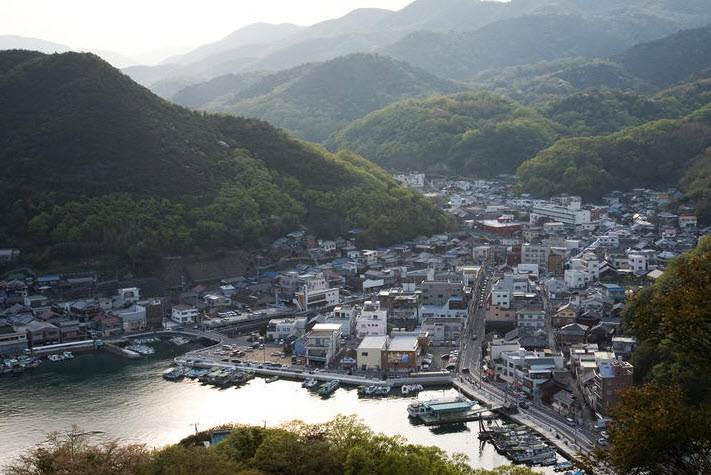
Bizen City Japan
Given ten days in Japan, most people would not put a rural town in Okayama Prefecture on the top of their list. However, most people are not my friend Jenny. She took up pottery after retiring, and devoted as much effort to that as she ever did to her job. She was actually very good, and now we were in Japan seeing some of the traditional forms in person. I think she chose me to go with her because I really don’t care very much about what I see, I just like to go new places.
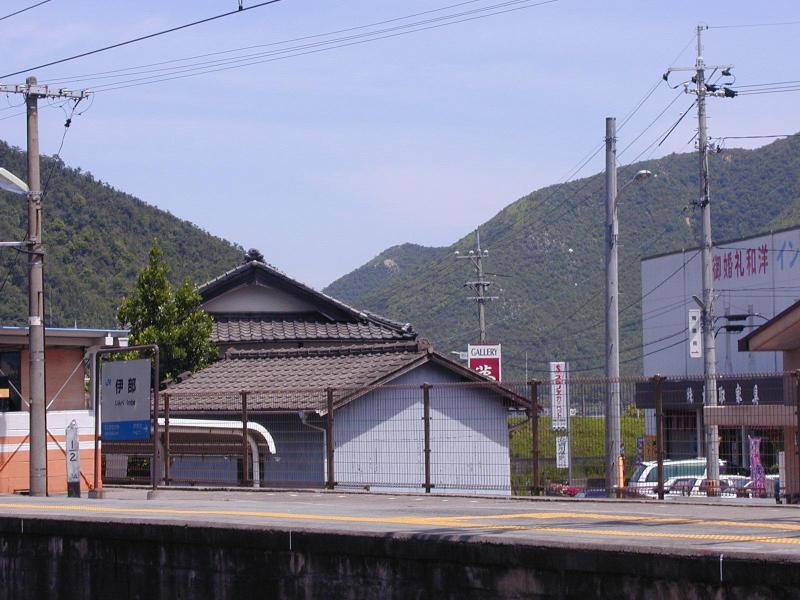
View from Imbe Station, Bizen
Which is why yesterday we caught the shinkansen bullet train from Osaka to Okayama city, then transferred to a rather tired-looking little train on a small track through the countryside. Jenny kept checking her notes against the names of the stations we passed, and after about 45 minutes called out in delight that we had made it to Inbe Station in Bizen City.
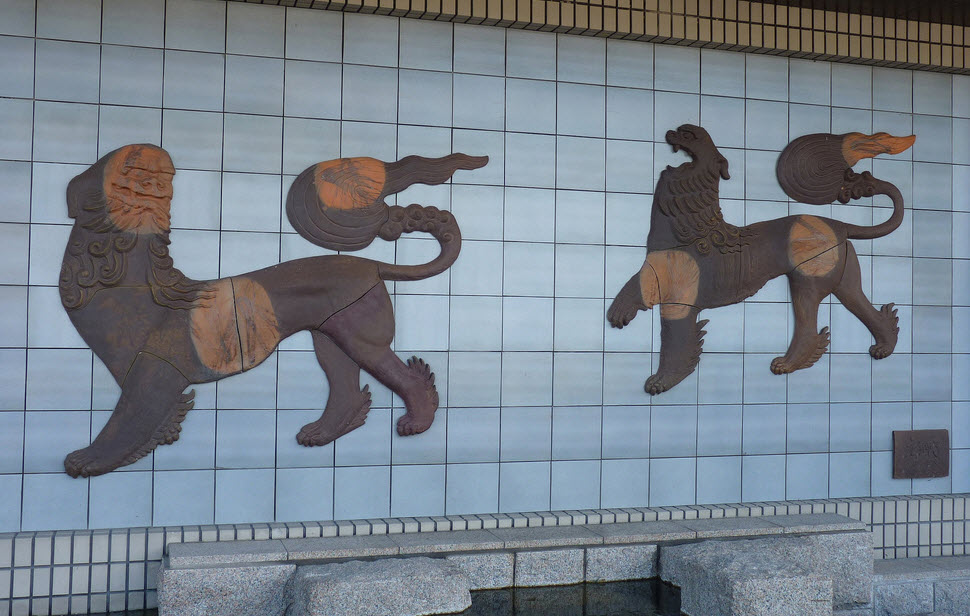
Inbe Station wall
It looked a lot like the other places we had passed, and to be honest, I was rather excited to visit a place that was, well, a regular town. Not fancy temples and shrines, but just a slice of everyday life. Real people doing everyday things, not a show for tourists. Clothes hanging out to dry, kids riding bicycles, an old woman working in her garden. I was really excited about what little details the day might reveal.
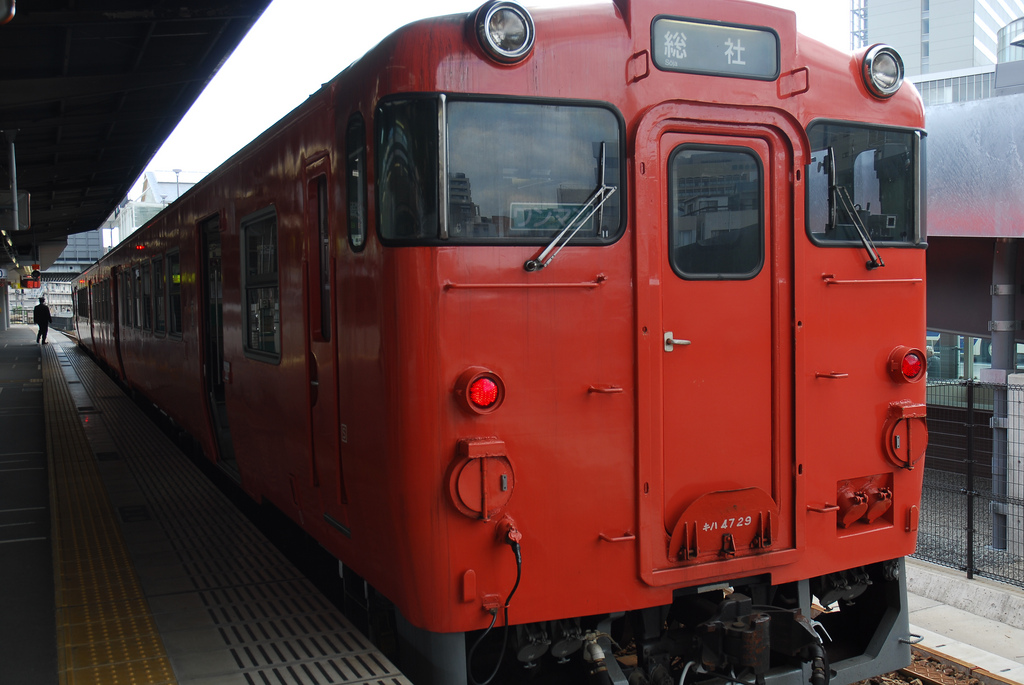
Bizen train (photo: jaclinepaskero)
Our first stop was the souvenir shop in the station itself. It has the fancy title of “Bizen-yaki Traditional Industries Hall,” reflecting the local craft, Bizen pottery. The first floor had foods and postcards of famous places far from where we were. Upstairs, though, was a room filled with plates and cups and vases, all in subtle shades of brown.
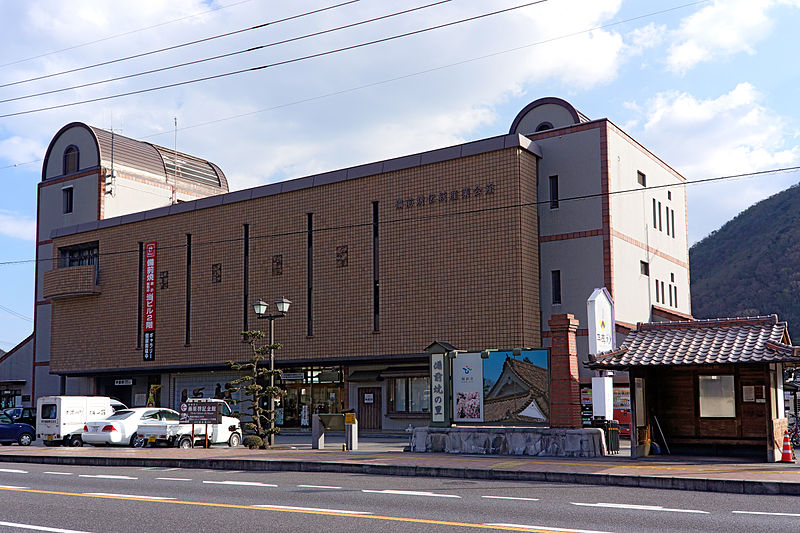
Bizen-yaki traditional industres hall in Inbe Station, Bizen
Jenny exclaimed in delight as she walked down the rows, giving me a quick lesson in Bizen-yaki, which is what she called this type of pottery. Apparently they do not use glaze, but fire the clay very slowly using many different natural things to color it. The round circles were where another object was placed on the clay, the red lines were rice straw that burned away during firing. I especially liked a sandy texture which she called “gomma.” It was made with pine ash. She said these techniques have been around for over 1,000 years. The subtle colors and textures make Bizen ware highly collectible among people who do the tea ceremony and flower arranging.
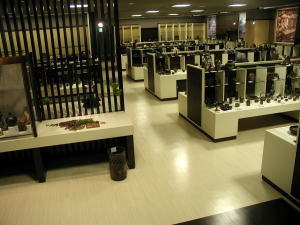
Bizen-yaki traditional industres hall
We didn’t stay long, though, because Jenny was on a mission. She was not going to settle for pottery from a train station, she wanted to see everything. Next on the agenda was the Bizen Ware Traditional and Contemporary Art Museum. I hope the name is shorter in Japanese, but it certainly described the contents. It was easy to find, to the right of the station as we walked out. The longest part getting there was waiting for the light to change to cross the street.
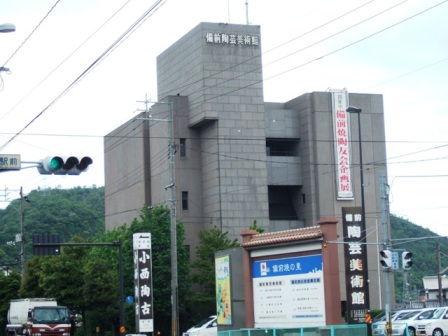
Bizen pottery traditional and contemporary art museum
I am assuming if you have a passion for pottery, this museum would be high on your list. It had four floors dedicated not just to pottery, but to the very specific techniques found in this area. There was an introduction to the art, historical pieces, and modern ones.
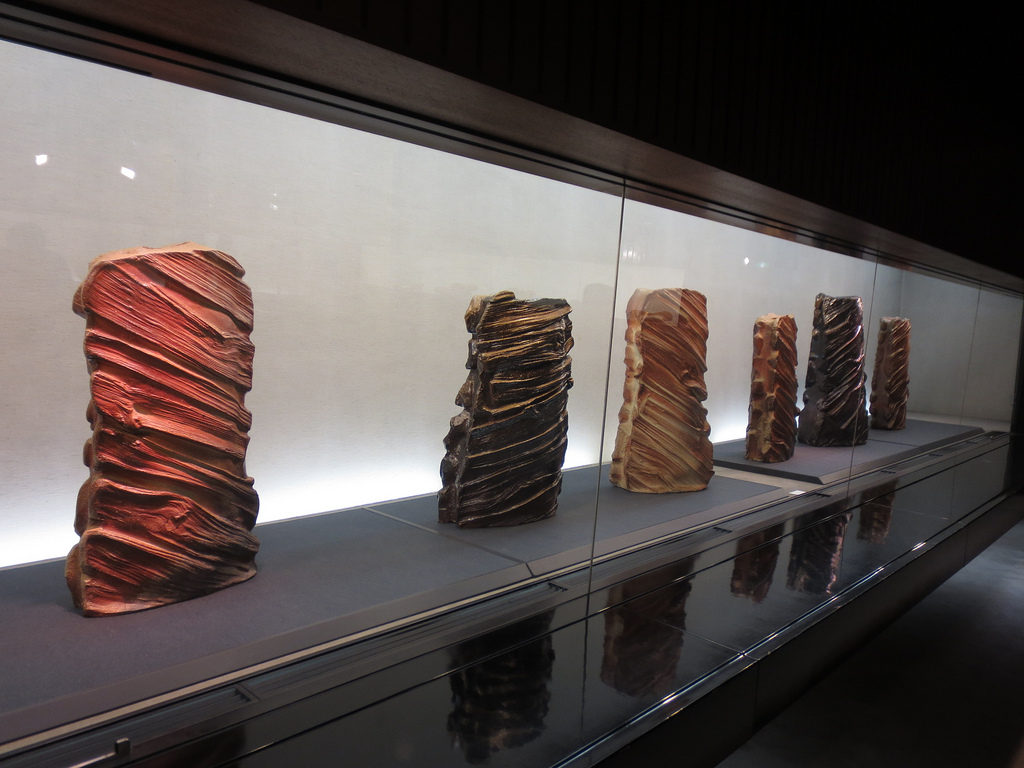
Bizen Ware Traditional and Contemporary Art Museum (photo: MasamiToku)
I was fascinated that some of the old ones, made multiple centuries ago, looked so much like the newer pieces. I would have appreciated more descriptions in English, but the pieces were beautifully displayed and I think I most enjoyed watching Jenny’s enthusiasm at seeing the subject of her studies up close.
The third floor was devoted to the works of artists designated “Living National Treasures.” I wondered what it would be like to live with such a burdenon your shoulders, but Jenny bubbled on that part of the responsibility is not just to make art, but to teach others so the skills can be preserved through the generations, which is a really special thing.
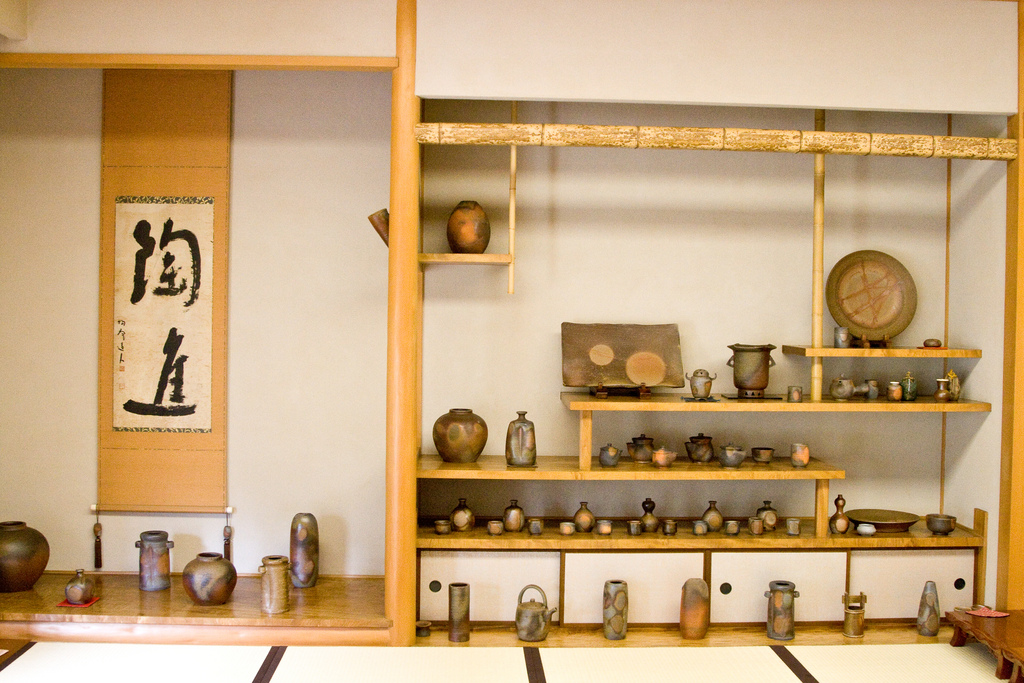
Bizen-yaki shopping (photo: jar/flickr)
Our plan after the museum was much more flexible. We were now in a town with dozens and dozens of galleries dedicated to the craft. Some were dealers selling the work of multiple artists, and others were the wares of just one person. We decided to stroll through the area, stopping at ones that interested us. Though she was extremely interested in Bizen-yaki, Jenny did not have a specific artist in mind. Her goal was to get ideas for her own work and enjoy an afternoon surrounded by beautiful pottery.
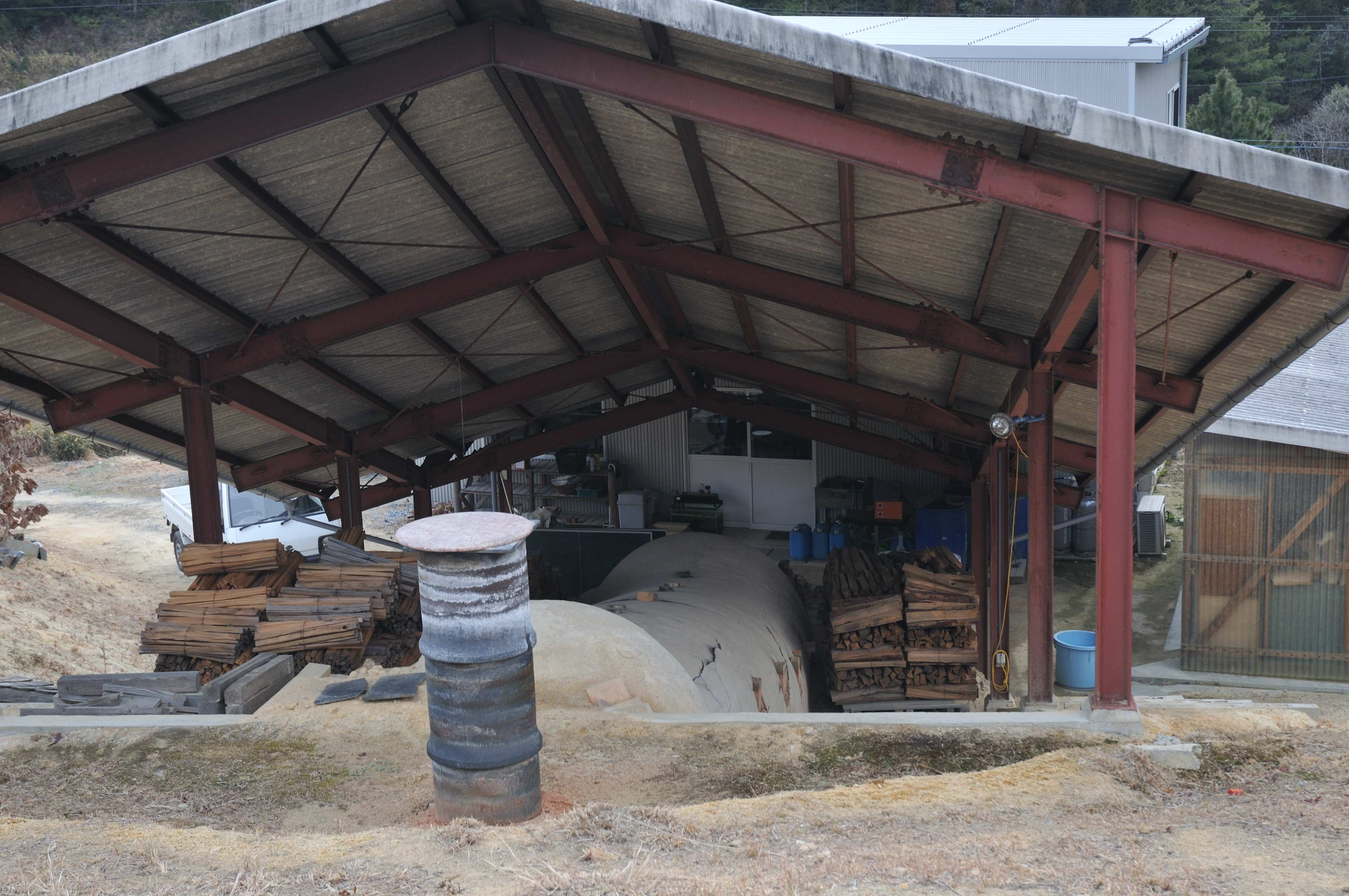
Bizen-yaki (photo: jar/flickr)
There was plenty of beautiful pottery to look at. The galleries sure varied. There were some with elegant display cases and soft-spoken staff that sat us down at a table with iced barley tea to drink when we entered. Others had pottery piled in uneven stacks that looked like they would topple at any moment.

For me, the galleries themselves were fascinating. I most liked one with a lizard on the wall. I thought it was part of a display, but then it moved and I realized it was live and had come in through the open front door. I wonder if anyone else noticed it?
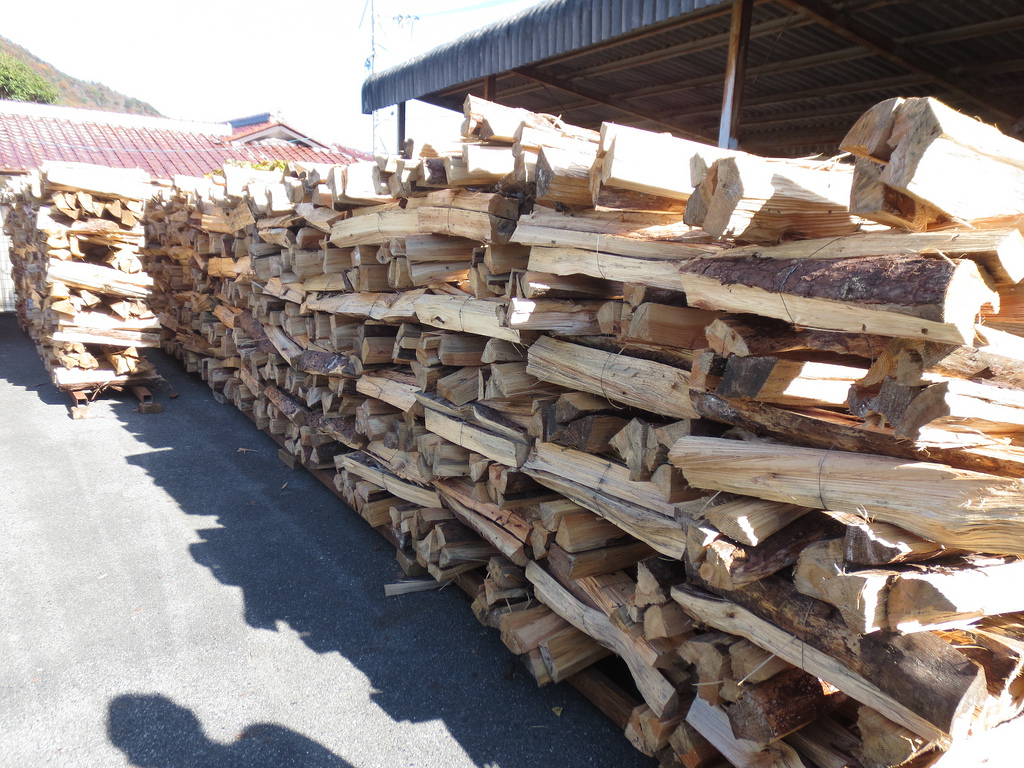
wood for bizen-yaki (photo: MasamiToku/flickr)
The town itself was charming, peppered with small workshops with huge stacks of firewood and huge brick chimneys, picturesque against the green of the forested hills behind. There was also a kiln built into the mountainside surrounded by a chain-link fence; it turned out that it was a tunnel kiln about a 500 years old from the Momoyama Period and designated as a national treasure. We walked down a few back alleys just enjoying the vignettes of daily life in another country.
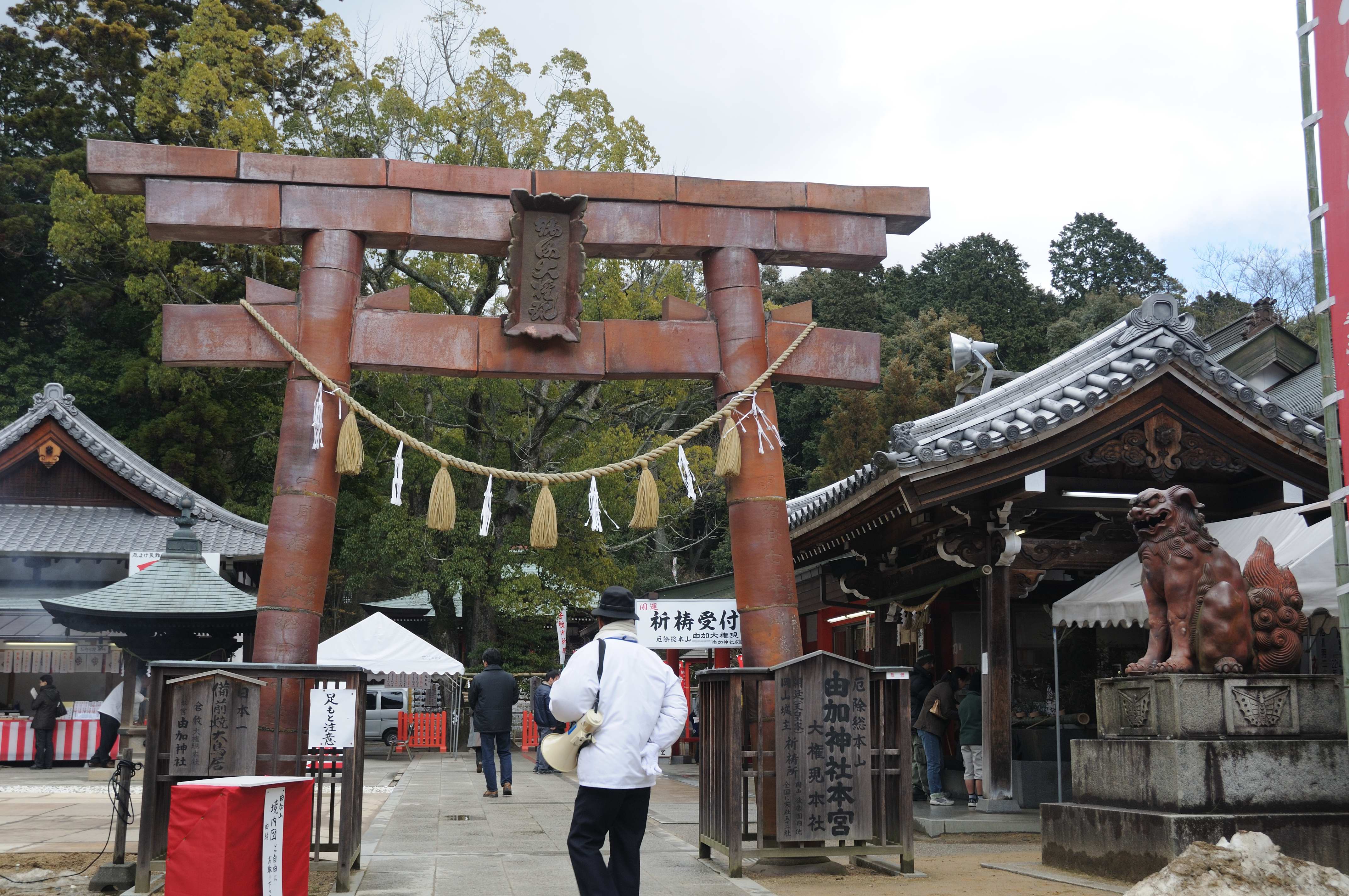
We ran across a tori gate in front of a staircase, and had to explore. There was a small shrine, similar to ones all over Japan, but the amazing part was the loving details all made out of pottery. The guardian lions were huge examples of Bizen ware, and the walls were capped with handmade tile. In one place there was a little mouse family, and from the prices we had seen in the gallery, these were not insignificant offerings to the god enshrined there.
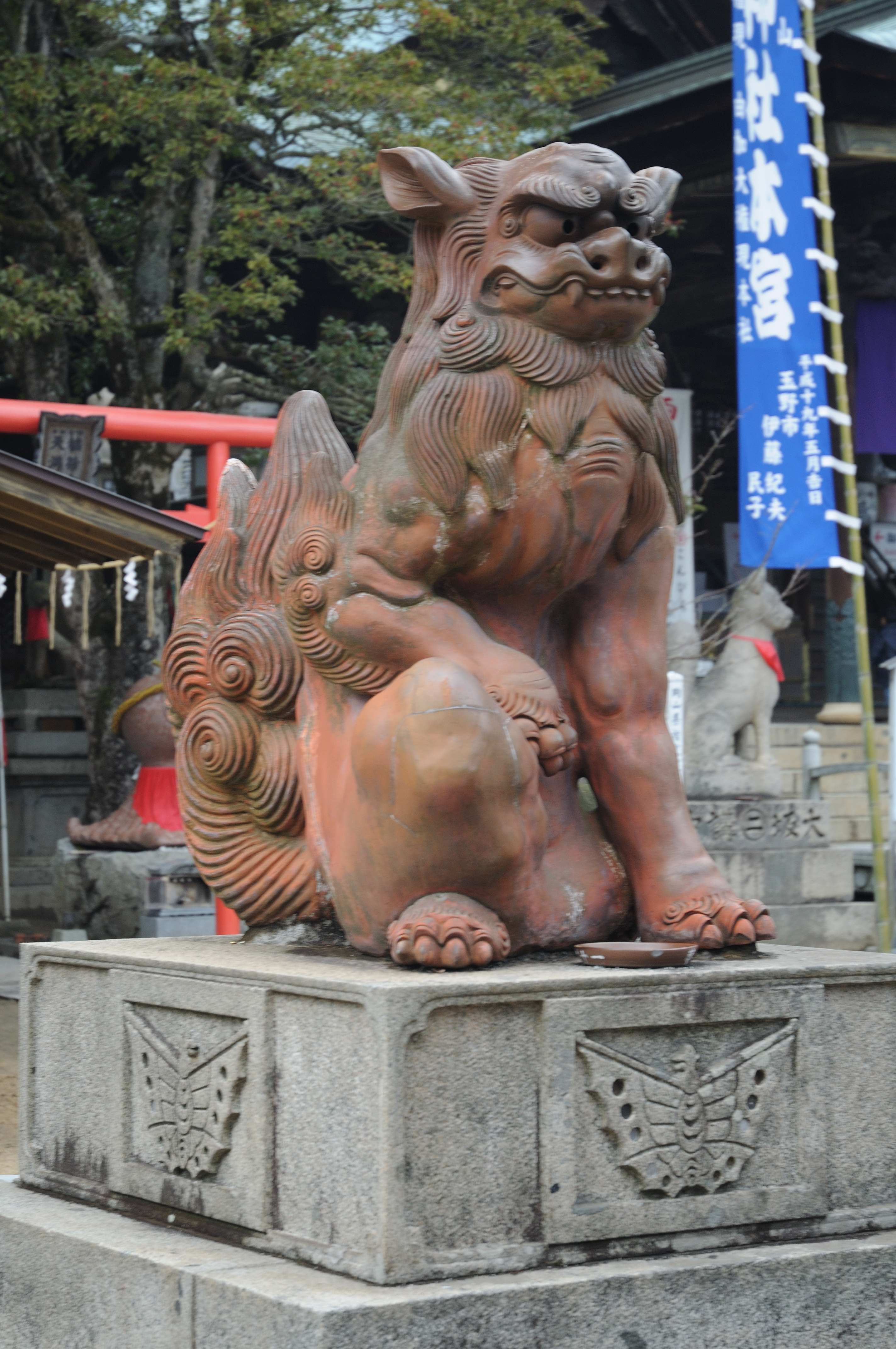
Lunch was also quite fun. There was an old warehouse with a dark wood fence and gate. We might have passed it by except for the giant plastic ice-cream cone out front. So we slid open the panel door and found an open tatami space with low tables and cushions. The walls were lined with shelves packed with Bizen-yaki. We took off our shoes and sat down, a waitress bringing water in exquisite little cups. The menu had pictures of the three items the offered: curry, hamburgers, and ice cream. The waitress pointed to the curry and ice cream set, and so we opted for that.
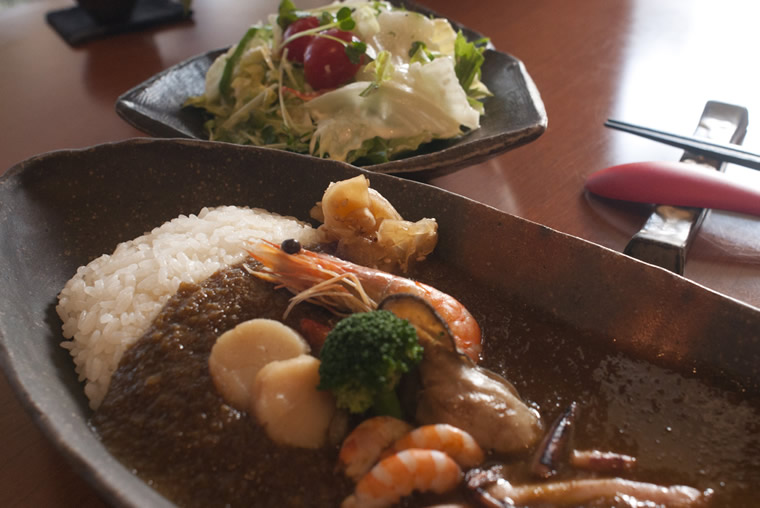
bizen seafood curry (photo:bizen-curry.mods.jp)
Only later did we find out that this was a famous restaurant that had been on multiple television shows. The food was outstanding at Shurakukan Restaurant! It was a simple but hearty organic beef and fig curry, spicy but not hot. It was served with wonderful little pickled peaches and rice, all artfully presented on Bizen-yaki plates. Dessert was even more surprising and delicious: vanilla ice cream with homemade caramel and hot wasabi. Who would have imagined that the flavors would blend so well? We lingered over our meal, enjoying the chance to sit and relax before heading out to more galleries.
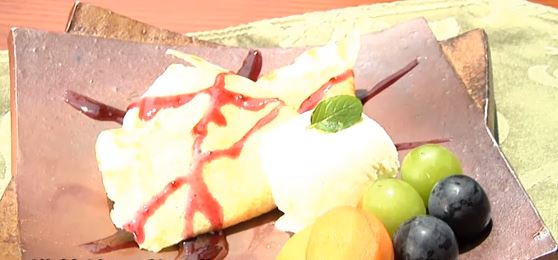
Bizen dessert
Finally even Jenny had her fill of looking at plates and cups and vases. She settled on purchasing a vase by a famous craftsman. She also got several chopstick rests to use as gifts for her pottery teacher and the other students back home. I opted for a pair of little plates that were technically seconds because there was a slight dent on the rim from firing. However, they fit my budget, and more than that, I would not be too upset if my 3-year old grandson broke one. My practical side would not let me spend hundreds of dollars on one fragile item, though I do enjoy looking.
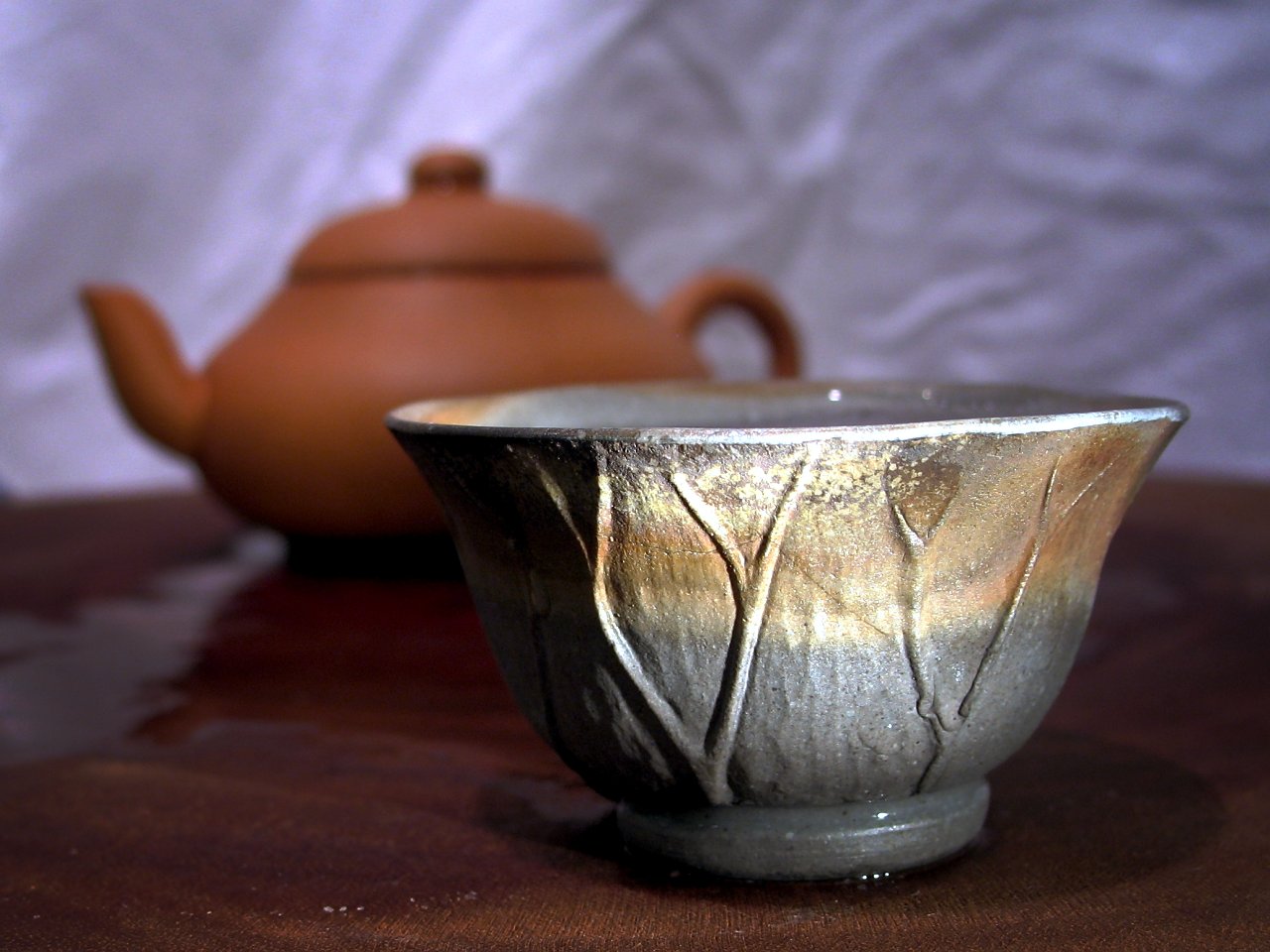
Imbe Bizen-yaki (photo: Rob Ireton)
At last, we returned to the station. Considering how much time we had spent, it was amazing that we had not strayed more than about 10 blocks from our starting point. Tired and feeling sated, we boarded the train for the long ride back to Osaka. Though we had different motivations for going, both Jenny and I will treasure the memories of a place that most tourists never see.
